
Lithops is a genus of succulent plants in the ice plant family, Aizoaceae. Members of the genus are native to southern Africa. The name is derived from the Ancient Greek words λίθος, meaning "stone," and ὄψ, meaning "face," referring to the stone-like appearance of the plants. They avoid being eaten by blending in with surrounding rocks and are often known as pebble plants or living stones. The formation of the name from the Ancient Greek "-ops" means that even a single plant is called a Lithops.

Cyphostemma juttae is a slow-growing succulent species of Cyphostemma from southern Africa, well known as an ornamental plant.
Gelrebia merxmuellerana is a species of legume in the family Fabaceae. It is found only in Namibia.
Pentatrichia avasmontana is a species of flowering plant in the family Asteraceae. It is found only in Namibia. Its natural habitat is rocky areas.
Pentzia tomentosa is a species of flowering plant in the aster family. It is endemic to Namibia. Its natural habitat is rocky areas.
Babiana longicollis is a species of plant in the family Iridaceae. It is endemic to Namibia.
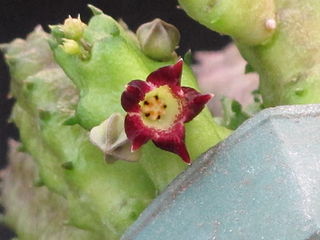
Baynesia lophophora is a species of plant in the family Apocynaceae. It is endemic to Namibia.
Ceropegia dinteri is a species of plant in the family Apocynaceae. It is endemic to Namibia. Its natural habitats are subtropical or tropical dry shrubland and rocky areas.
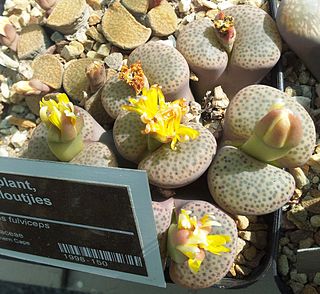
Lithops fulviceps is a species of plant in the family Aizoaceae. It is endemic to Namibia. Its natural habitats are rocky areas and cold desert. It is threatened by habitat loss.
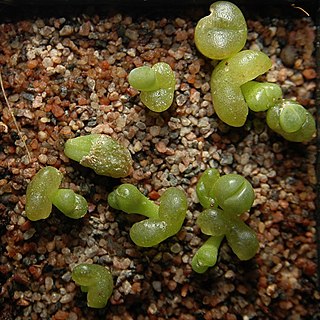
Lithops optica is a species of plant in the family Aizoaceae, endemic to Namibia.
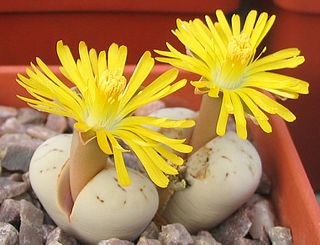
Lithops ruschiorum is a species of plant in the family Aizoaceae. It is endemic to Namibia. Its natural habitats are rocky areas and cold desert.

Lithops vallis-mariae is a species of plant in the family Aizoaceae. It is endemic to Namibia. Its natural habitat is subtropical or tropical dry shrubland. It is threatened by habitat loss.

Lithops werneri is a species of plant in the family Aizoaceae. It is endemic to Namibia. Its natural habitat is rocky areas.
Tridentea pachyrrhiza is a species of plant in the family Apocynaceae. It is endemic to Namibia. Its natural habitats are rocky areas and cold desert.
Lyndley Alan Craven was a botanist who became the Principal Research Scientist of the Australian National Herbarium.
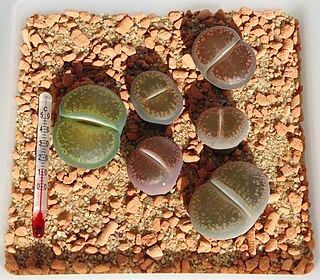
Lithops aucampiae is a species of flowering plant in the family Aizoaceae, found in South Africa. it was named after Juanita Aucamp, who found a specimen on her father's farm in Postmasburg, Northern Cape in 1929.

Lithops salicola is a species of perennial plant in the family Aizoaceae, often called living stones, because of its remarkable resemblance to round grey pebbles.

Lithops francisci, commonly known as one of the living stones or pebble plants, is in the family Aizoaceae. It is endemic to the arid desert environments of Namibia. It is a succulent with a natural habitat in rocky areas. L. francisci was assessed by Nicholas Edward Brown in 1925. It is one of the Lithops plants and shares the characteristic bi-leaf head pattern separated by a deep fissure, the bottom of which houses and protects the stunted stem.
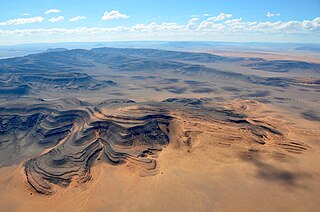
Tsaus Mountains is a mountain range within Diamond Restricted Area also called Sperrgebiet located in the southwestern part of Namibia. It reaches a height of 1,107 m.













